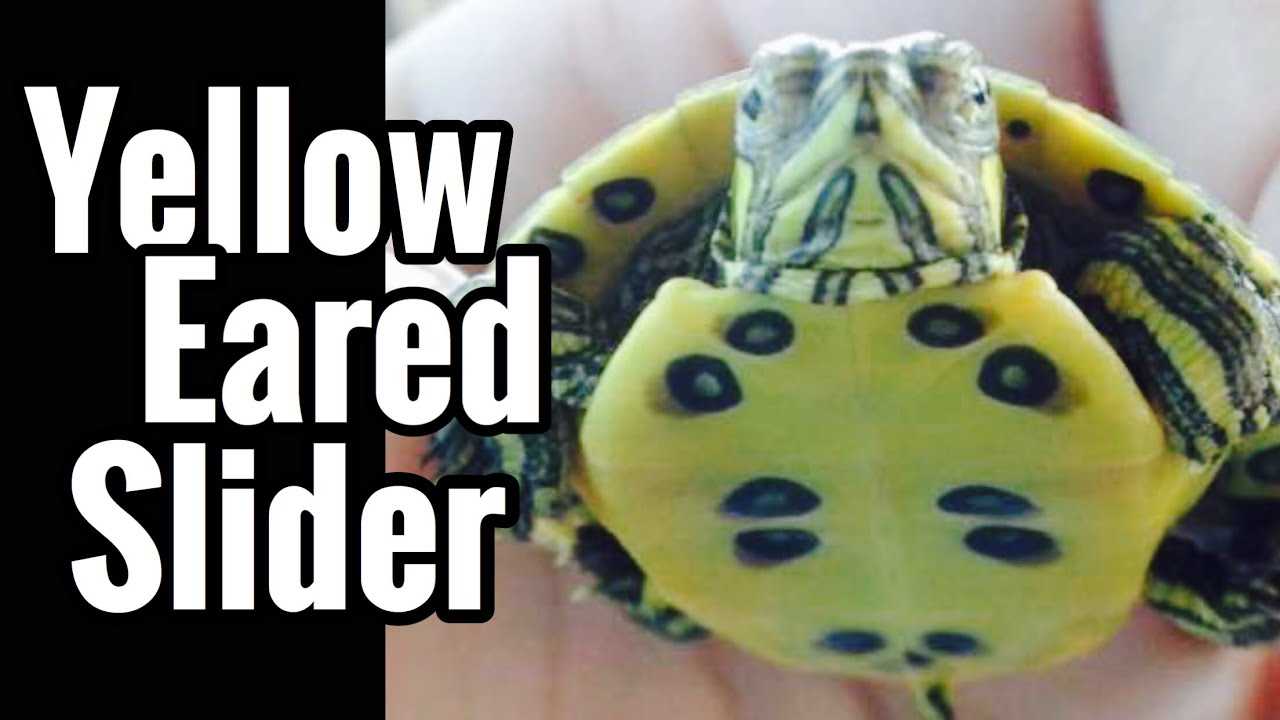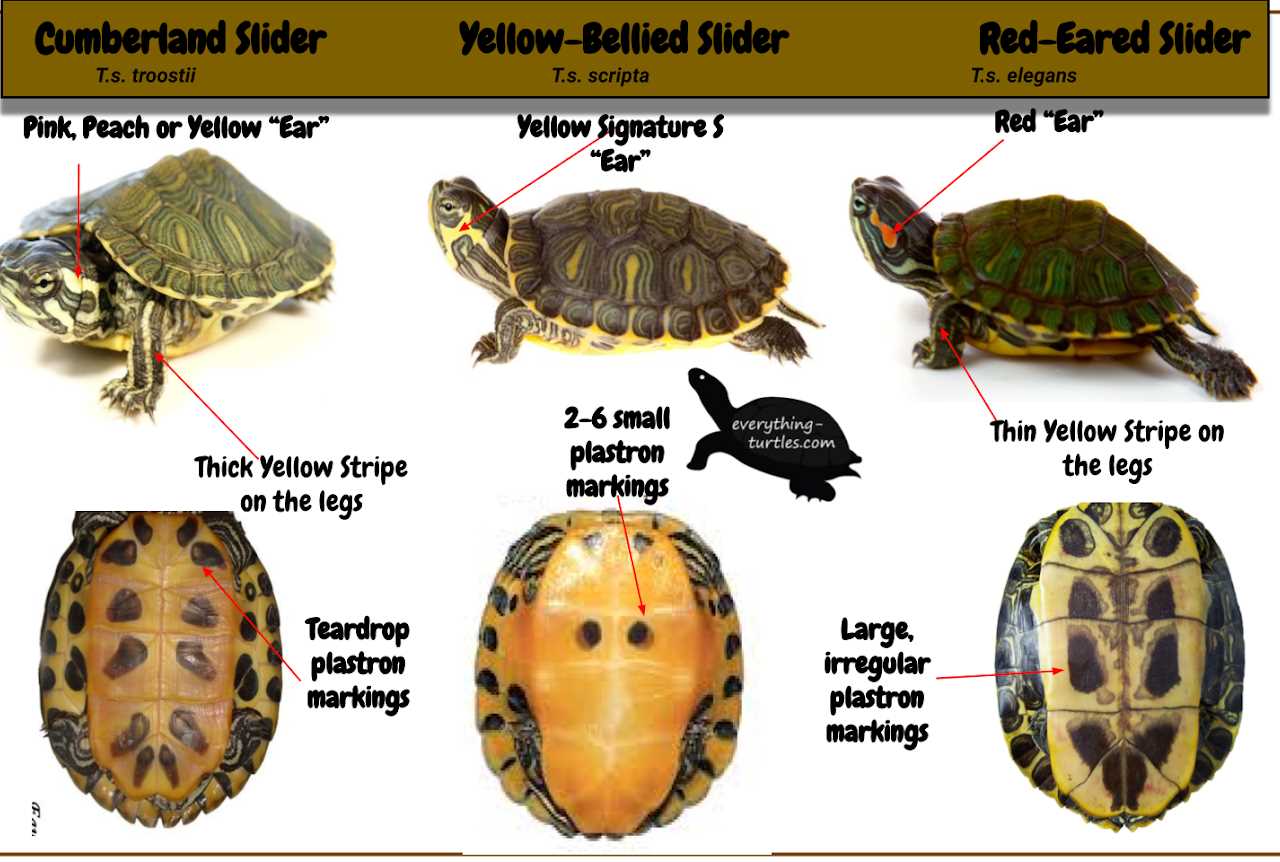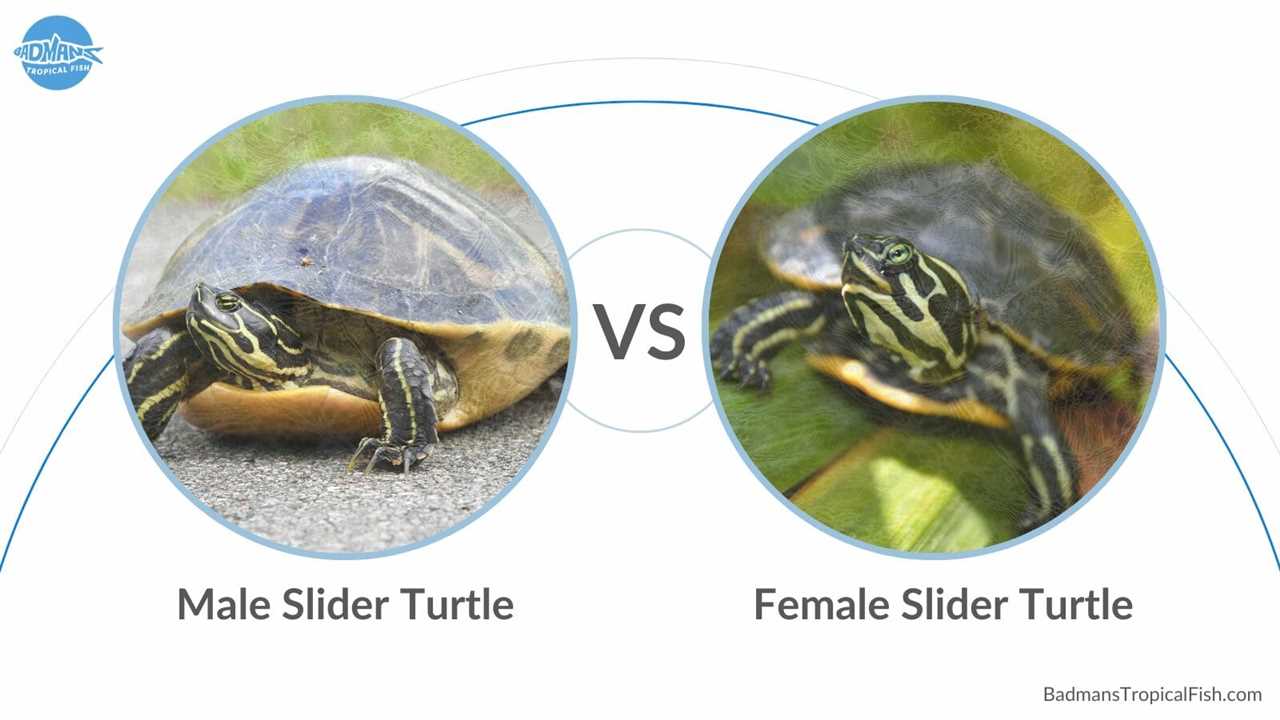
One of the most noticeable differences between male and female Yellow Bellied Sliders is their size. Males tend to be smaller than females, with a shell length of around 5-8 inches, while females can reach sizes of up to 12 inches or more. This size difference is due to the fact that females need more space to accommodate their eggs.
Another difference is in the appearance of their shells. Male Yellow Bellied Sliders typically have longer and more curved nails on their front feet, which they use during mating rituals to stroke the female’s face and shell. Additionally, males have a longer and thicker tail compared to females. On the other hand, females have a shorter and wider tail, which allows them to store fat reserves for egg production.
Physical Differences between Male and Female Yellow Bellied Slider Turtles
1. Size and Weight
2. Coloration
Coloration is another distinguishing factor between male and female Yellow Bellied Slider Turtles. Male turtles often exhibit brighter and more vibrant colors, especially on their heads. They can have a yellowish to greenish hue on their bellies, with varying patterns of darker markings. On the other hand, female turtles have less intense coloration, with a slightly duller appearance.
3. Behavioral Differences
Behaviorally, male and female Yellow Bellied Sliders also exhibit distinct traits. Males tend to be more territorial and aggressive, especially during the mating season. They may engage in head-bobbing and biting behaviors to establish dominance and attract females. Females, on the other hand, are comparatively more docile and may display nesting behaviors during the breeding season.
4. Territoriality
5. Mating Season
The mating season is a crucial time for male and female Yellow Bellied Sliders. It is during this time that males become more active and display courtship behaviors to attract females. Male turtles may engage in prolonged courtship rituals, including swimming around the female, extending their claws, and nodding their heads. Females, on the other hand, play a passive role in courtship and choose their mates based on the male’s display of dominance and fitness.
Size and Weight of Male Yellow Bellied Slider Turtle
Physical Differences
Males and females of the Yellow Bellied Slider Turtle exhibit some physical differences. Males tend to have longer claws and thicker tails compared to females. Additionally, males usually have a brighter and more vibrant coloration on their carapace and plastron.
However, the most noticeable difference between males and females of this species is the size and weight.
Size and Weight
Male Yellow Bellied Slider Turtles are generally smaller in size compared to females. On average, males measure between 5 to 9 inches in carapace length, while females can grow up to 11 to 13 inches.
These size and weight differences can be observed throughout the lifespan of the turtles. Male Yellow Bellied Sliders tend to reach their full size at around 5 to 6 years of age, while females can continue to grow until they are 8 to 10 years old.
Factors such as genetics, diet, and environmental conditions can also influence the size and weight of the Yellow Bellied Slider Turtles.
Conclusion
| Characteristics | Male Yellow Bellied Slider Turtle | Female Yellow Bellied Slider Turtle |
|---|---|---|
| Size | 5 to 9 inches (carapace length) | 11 to 13 inches (carapace length) |
| Weight | 0.5 to 1.5 pounds | 1.5 to 3 pounds or more |
These are average measurements and individual turtles may vary.
Coloration of Male vs Female Yellow Bellied Slider Turtle

One way to differentiate between a male and female yellow-bellied slider turtle is through their coloration. Both males and females have a yellowish or olive-colored belly, which gives them their common name. However, there are distinct differences in coloration between the two sexes.
Male yellow-bellied slider turtles often have more vibrant and colorful markings on their shells compared to females. These markings can be seen as yellow, orange, or red patches on their shells, which gives them a more striking appearance. The head and limbs of males can also be more brightly colored, with yellow or orange patterns.
In contrast, female yellow-bellied slider turtles tend to have a more subdued coloration. Their shells may have lighter, more muted markings, and their heads and limbs are usually darker in color. This difference in coloration might be attributed to their role in reproduction, as it helps males attract females during mating season.
Overall, the coloration of male and female yellow-bellied slider turtles differs, with males having more vibrant and colorful markings, while females have a more subdued coloration.
Behavioral Differences between Male and Female Yellow Bellied Slider Turtle
Male and female yellow bellied slider turtles display distinct behavioral differences, which can be observed in various aspects of their lives. These differences are influenced by their biological makeup and play a significant role in their survival and reproduction.
1. Courtship Behavior: During the mating season, male yellow bellied slider turtles exhibit courting behavior, which involves swimming and moving towards the females in a synchronized manner. They may also flutter their front claws to attract the attention of the females. In contrast, females tend to remain passive and choose a mate based on the male’s behavior and physical traits.
3. Nesting Behavior: Females yellow bellied slider turtles exhibit nesting behavior, which involves digging a hole in the ground using their hind legs to lay their eggs. This behavior typically occurs in sandy or loose soil near bodies of water. After laying the eggs, females cover the nest and return to the water, leaving the eggs to incubate and hatch on their own. Male turtles, however, do not engage in nesting behavior.
4. Swimming Behavior: Male yellow bellied slider turtles are often more active swimmers compared to females. They tend to explore their surroundings, engage in territorial disputes, and actively search for food. Females generally spend more time basking in the sun or resting on rocks and logs, conserving energy for nesting and reproduction.
5. Aggression: Male yellow bellied slider turtles can display more aggressive behavior, especially during mating and territorial disputes. They may become territorial and show aggression towards other males, competing for the attention of females and defending their territories. Female turtles, on the other hand, are generally less aggressive and more focused on reproductive activities.
Territoriality
The male yellow-bellied slider turtle is known for its territorial behavior, especially during the mating season. Male turtles will fiercely defend their territory from other males, using various aggressive behaviors to establish dominance and secure their mating opportunities.
When a male turtle spots another male entering its territory, it will engage in aggressive displays to intimidate the intruder. This includes head bobbing, hissing, and shell ramming. These behaviors are meant to assert dominance and establish the territorial boundaries. The male turtle may also use its long claws to scratch and bite the intruder, inflicting injuries if necessary.
During the territorial disputes, the male turtle may display bright coloration on its limbs and head, signaling its dominance and warning other males to stay away. This coloration is more prominent during the mating season when competition for females is high.
However, not all territory disputes among male yellow-bellied slider turtles result in physical confrontations. In some cases, males may engage in ritualized displays, where they swim parallel to each other or circle around each other without engaging in direct physical contact. These displays can be seen as a way to assess the strength and size of the opponent without actually fighting.
Female yellow-bellied slider turtles, on the other hand, are not as territorial as males. They do not actively defend a specific area but will instead seek out suitable nesting spots. Females are more focused on finding appropriate locations to lay their eggs and will often travel long distances to find the right place.
Overall, the territorial behavior of male yellow-bellied slider turtles plays a crucial role in their reproductive success. By asserting dominance and defending their territory, males increase their chances of attracting females and breeding successfully.
Matting Season

During the matting season, which typically occurs in spring or early summer, male and female Yellow Bellied Slider turtles engage in a series of courtship behaviors. This is the time when they come together for mating purposes.
Males become more active and display their dominance by swimming around and bumping into other males in the water. They also employ head bobbing and chin stroking as a way to attract the attention of the females.
Female Yellow Bellied Sliders, on the other hand, become more receptive to the advances of the males during this time. They may swim near the males and exhibit submissive behaviors such as head bobbing and chin stroking in response to the male’s courtship display.
Once a male successfully courts a female, they will mate in the water. The male clasps onto the female’s shell and uses his hind claws to grip onto her in order to maintain their position during copulation. The mating process can last for several hours.
After mating, the female will begin the process of building a nest. She will dig a hole in sandy or soft soil near the water’s edge using her hind limbs. The nest is usually around 6 to 8 inches deep and the female will lay around 10 to 20 eggs in the nest.
| Slider turtle | Yellow | Female | Male |
|---|---|---|---|
| Size and Weight | Small to medium | Larger | Smaller |
| Coloration | Yellowish-brown | Olive green | More vibrant yellow |
| Behavioral Differences | More docile | More territorial and aggressive | Less territorial and less aggressive |
| Territoriality | May establish small territories | Mark and defend larger territories | Less likely to mark and defend territories |
| Matting Season | Occurs in spring or early summer | Becomes more receptive to male’s courtship | Becomes more active and displays courtship behaviors |

I’m Lena Adams—a product of an unconventional upbringing in the African wilderness. My father, a daring explorer of African wildlife, sparked my fascination with reptiles, a passion that intertwined with the tragic loss of my mother during an expedition, leaving an indelible mark on my life. Driven to understand the creatures that captivated my parents, I embarked on my journey, sharing insights about reptiles, frogs, and lizards on my website. Through my explorations and conservation efforts, I honour my family’s legacy while seeking connections—to the creatures, nature, and the mother whose presence I yearn to understand.
